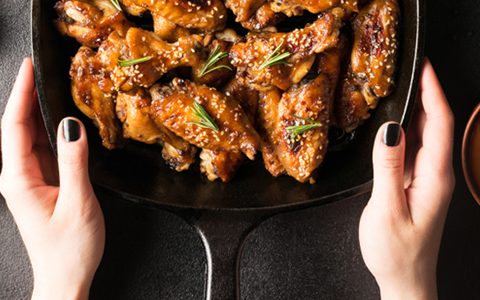Why You Should Use Cast Iron Cookware and How to Make It Last a Lifetime
Cast iron cookware often brings back childhood memories—like your grandparents cooking delicious meals in a pan so heavy you could barely lift it. And even today, that same pan might still be in use, looking just as good as ever.
Cast iron is known for its durability. When properly cared for, these pans can last for generations. Below, you’ll learn how to season new cast iron cookware before first use, and how to maintain it to prevent food from sticking.
Benefits of Using Cast Iron Cookware
- Natural Non-Stick Surface: When well-seasoned, cast iron creates a natural non-stick coating without chemicals.
- Easy to Clean: Simply rinse with hot water, remove food residue with a metal spatula, reheat to evaporate moisture, and wipe with an oiled paper towel.
- Great Value: Cast iron is affordable and, with proper care, can last a lifetime or more.
- Even Heat Distribution: The thick material ensures stable cooking temperatures and prevents burning.
- Low Oil Cooking: You only need a thin layer of oil spread over the pan for perfect cooking.
- Highly Durable: Made from a single solid piece, it won’t break easily. Even rust can be removed with some effort.
- Suitable for High Temperatures: Ideal for searing meat and other high-heat techniques.
How to Prepare Cast Iron Cookware Before First Use
Some cast iron pieces come pre-seasoned, but if not, you’ll need to season them yourself. This process involves coating the pan in oil and heating it to high temperatures. When heated, the oil polymerizes into a plastic-like layer that protects the surface.
Steps to Season Your Pan:
- Wash and dry the pan: Use warm water and a rough sponge. Dry with a towel and heat briefly on the stove to evaporate remaining moisture.
- Oil the pan: Rub oil all over the pan using a sponge—handle included. Use any vegetable oil, and make sure the pan looks dry, not greasy.
- Place in preheated oven: Bake at 230°C (450°F) for 30 minutes. Keep windows open—it may smoke. The oil will form a hard, protective layer.
- Repeat 3–4 times: After each round, re-oil the pan and return it to the oven. This builds multiple protective layers.
Practical Tips for Maintaining Cast Iron Cookware
To keep your cast iron cookware in top condition, follow these simple cleaning and storage practices.
Cleaning Cast Iron
- Clean immediately after use while still warm. This makes residue removal easier.
- Use warm water and a gentle dish soap. Avoid soaking the pan to prevent rust.
- If food is stuck, scrub with salt to loosen it.
- Dry with a clean towel, then heat the pan briefly to remove all moisture.
- Apply a thin coat of oil with a paper towel before storing in a dry place.
Foods to Avoid Cooking in Cast Iron
While cast iron is perfect for searing meat, sautéing vegetables, frying eggs, or making polenta, some foods should be avoided—especially in poorly seasoned pans:
- Acidic ingredients: vinegar, wine, tomatoes, and citrus can erode the seasoning.
- Strongly flavored foods: fish, garlic, and onions may leave lingering aromas.
- Liquids: avoid simmering liquids for long periods if the pan isn’t well-seasoned.
Common Cast Iron Problems and How to Fix Them
- Gray surface: Caused by abrasive scrubbing or strong detergents. Re-season the pan to restore its finish.
- Rust: Usually from water exposure or food residue. Use steel wool to scrub off the rust completely, then re-season.
Cast iron cookware is a wise investment for your kitchen. Not only does it cook meals evenly and efficiently, but with proper care, it can be passed down for generations.


